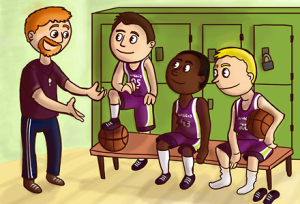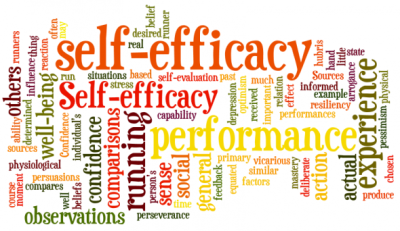The posts in this category represent the work of Kenyon College psychology students (Class of 2014) in the Social Interventions senior seminar (Fall 2013).
Social Interventions
S.O.A.R.: Using a Role Model Intervention to Close the Achievement Gap Between Latino American and Caucasian Students
“Once social change begins, it cannot be reversed. You cannot un-educate the person who has learned to read. You cannot humiliate the person who feels pride. You cannot oppress the people who are not afraid anymore.” — Chesar Chavez
“As you discover what strength you can draw from your community in this world from which it stands apart, look outward as well as inward. Build bridges instead of walls.”– Sonia Sotomayor
The achievement gap in academic performance between ethnic minority students and Caucasian students is a social issue that not only concerns parents and students, but educators, social scientists and—most importantly—policy makers. A recent study has shown that Latino American students earn on average a GPA of 2.74, while their Caucasian counterparts earn on average a 3.47 (Sherman et al., 2013). Why does this achievement gap exist?
Attachment and Perceived Social Support
Attachment and Perceived Social Support
Click the link for an interactive look at the relationship between perceived social support and attachment
School-wide bullying prevention in early elementary school
School bullying is a worldwide problem, and numerous prevention strategies have been implemented to decrease both the amount of students bullying their peers and the report of individuals feeling victimized. Bullying is defined as a relationship problem, in which aggression and power are applied to harm another individual. Considering SEL-focused programs such as Second Step or Steps to Respect, the current study applies similar ideas, lessons and strategies to decrease bullying and increase social emotional skills and competencies in K-2nd grade elementary school classrooms. The current study also implements the use of social learning theory, to reinforce bystander behavior in the classroom, and this study actively encourages the input and support from teachers and faculty. This prevention study was hypothesizes to decrease bullying, and this hypothesis was supported over the course of three years. Results show that whole-school intervention, including social-emotional development and teacher commitment is key to successful bullying prevention.
Preventing Youth Violence among African-American male adolescents
Homicide in this nation is the second leading cause of death for young people aged 15 – 24 years, at an average of 13 victims each day. Among homicide victims in 2010, almost 90% of them were male. While these statistics are shocking and speak to the need to take measure to prevent youth violence more seriously, the racial disparity within youth violence is even more alarming. The homicide rates in 2010 among African-American males 10 – 24 years of age was at 51.5 deaths per 100, 000 population, among Hispanic males was at 13.5 deaths per 100,000 population and among non-Hispanic, white males was at 2.9 per 100,000. Hence, the number of deaths caused due to homicide for individuals between the ages of 10 – 24 years was almost 20 times more for African-Americans than for White males. What are the reasons for this discrepancy? My intervention attempted to answer this question and examine the risk factors, specific to Black communities, that cause youth violence. Using that information, my intervention aimed to eliminate all those risk factors, and hence, reduce youth violence.
Examining an Intervention for Identity Formation in Corporations: The Benefits of Sports Sponsorship
SPORTS + SPONSORSHIP?
When one considers the benefits that sports provide to society, one may initially think of the health benefits of sports participation. Sports participation has been found to reduce the rates of cardiovascular disease, obesity, depression, and risky behaviors (Warburton, Nicol, & Bredin, 2006). Can sports provide an equally influential outcome in the context of work motivation for corporations? What may not initially come to mind when thinking about sports are the attributes that sports spectatorship through corporate sponsorship can have on social identity formation.
Maternal Contact and Cortisol: An Intervention in Childhood Attachment


Attachment is a critical process in the development of children that has important consequences in later life, varying from conduct disorders to cardiovascular illness (Ainsworth & Bell, 1970; Brown & Barlow, 2011). Attachment style, determined by infants’ and children’s observed behavior in the Strange Situation can vary from secure to disorganized, each with its positive and negative, respectively, repercussions in adulthood (ibid.). Various interventions aimed at increasing secure attachments or decreasing disorganized attachments have been created and tested by researchers to varying degrees of success. Generally speaking, interventions that are short-term, non-intensive, limited in scope, and target caregiver sensitivity have the strongest impacts, though multi-variate studies have shown significant results. Major limitations in these studies include small subject pools, targeting only one caregiver, confounds with normal maturation, and lack of random assignment or control groups.
Run, Jump, Play for a Better Day! An After School Program Using Team Sports and Social Identity Theory to Reduce Risky Behaviors
An intervention by: Patrick

The Problem
In today’s culture partaking in risky behaviors like using tobacco products, illegal drugs, stealing, fighting, as well as numerous other dangerous and illegal things have become the norm. Risky behaviors have been portrayed as something cool to do by many of the role models that kids have today especially people in the entertainment business. A risky behavior can be defined as a decision or action that may result in a negative consequence for your self and or another person. The Center for Disease Control and Prevention ran a study in 2011 thought found some pretty staggering statistics involving adolescents and these risky behaviors. The CDC found that 44.7% of students nations wide have tried smoking cigarettes, 70.8% have had a glass of alcohol at least once, 39.9%
The “Just Do It” Pedometer Intervention: Change Your Life, One Step at a Time.
Background:
The “Just Do It” intervention is based on the theory of self-efficacy. The theory was originally developed in the 1970s by Albert Bandura who was studying individuals who suffered from a phobic disorder of snakes. Upon observing that self-belief facilitated changes in arousal and behavior, he began exploring the function of self-referent thought in human psychological processes.
BULLYING PREVENTION: A SMALL-GROUPS COOPERATION INTERVENTION
Were you ever bullied? Do you know someone who was bullied?
In this post you will find basic information about bullying, including an idea for a new intervention to prevent bullying.
What is bullying?
- Bullying has been defined as an imbalance of power and repeated exposure to negative actions, which can include violence, nasty words, mean gestures, or intentional exclusion (Olweus, 1995).
- Three different forms of abuse: emotional, verbal, or physical.


